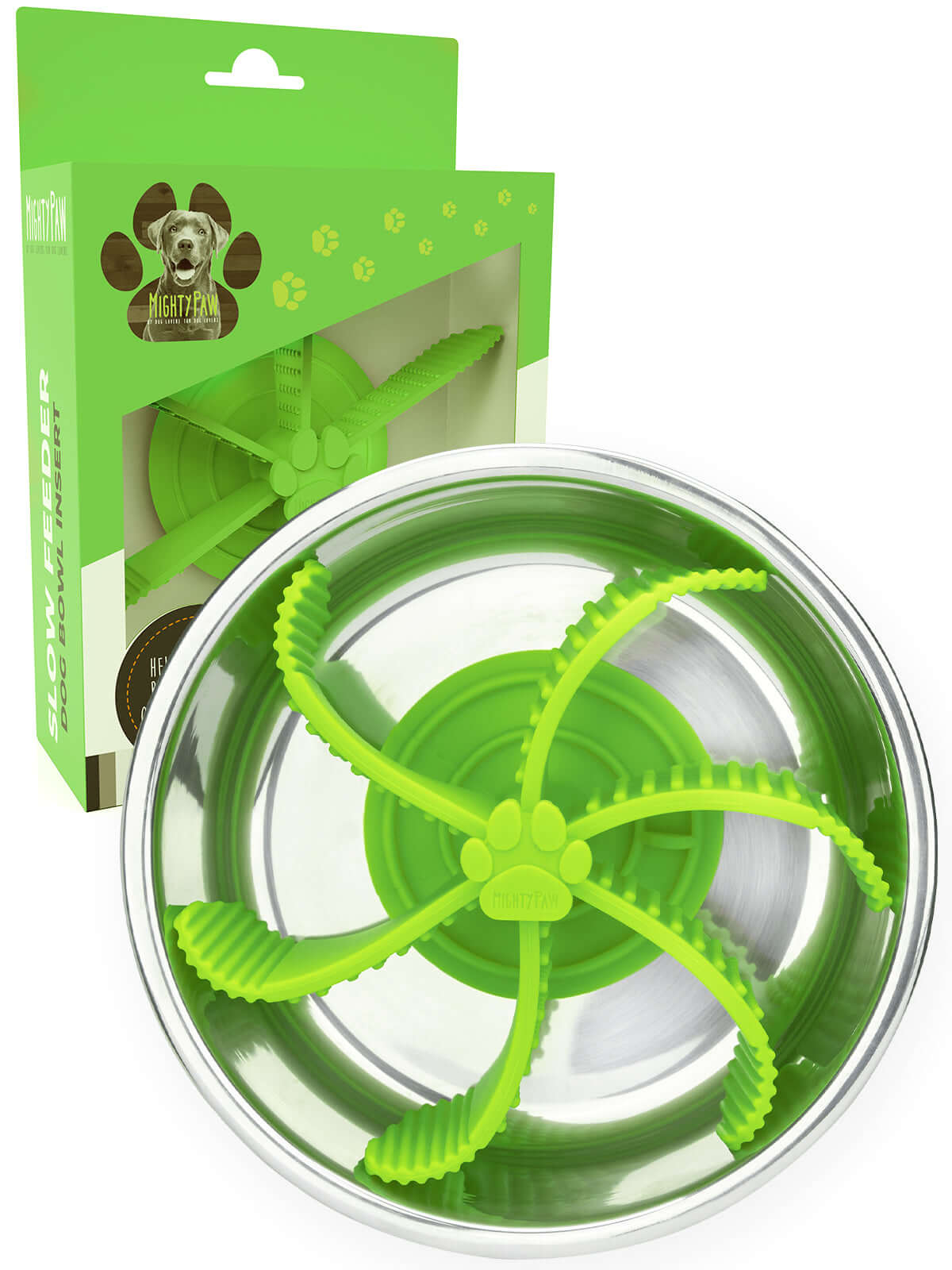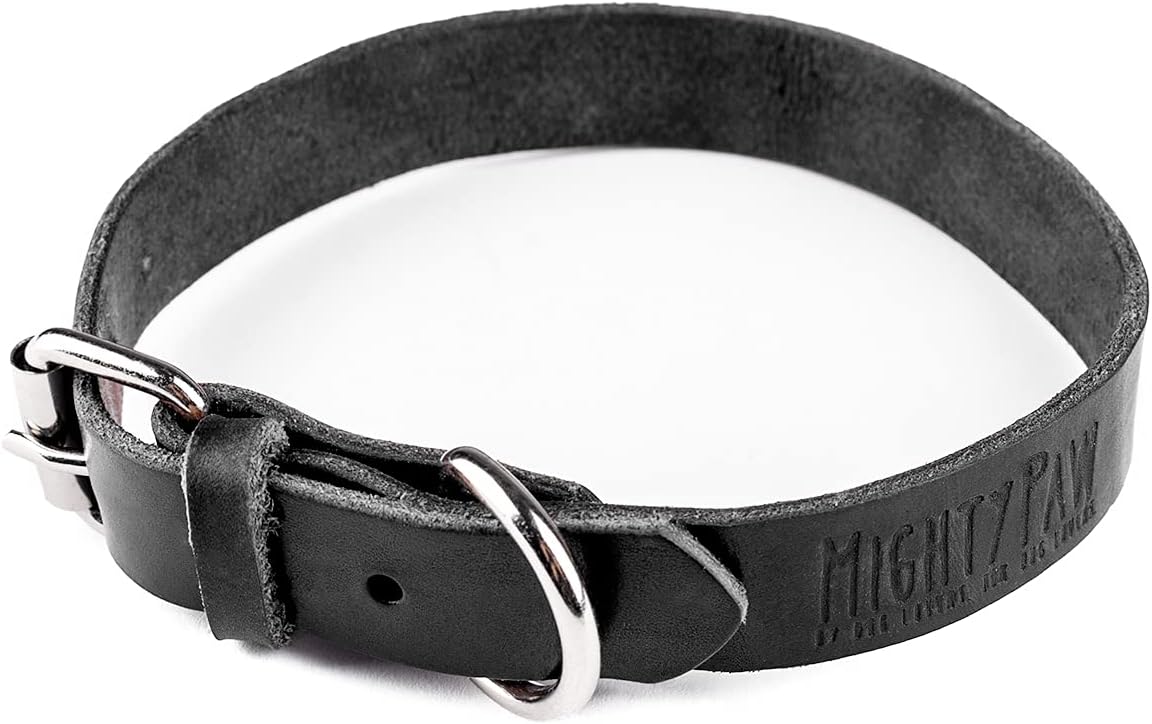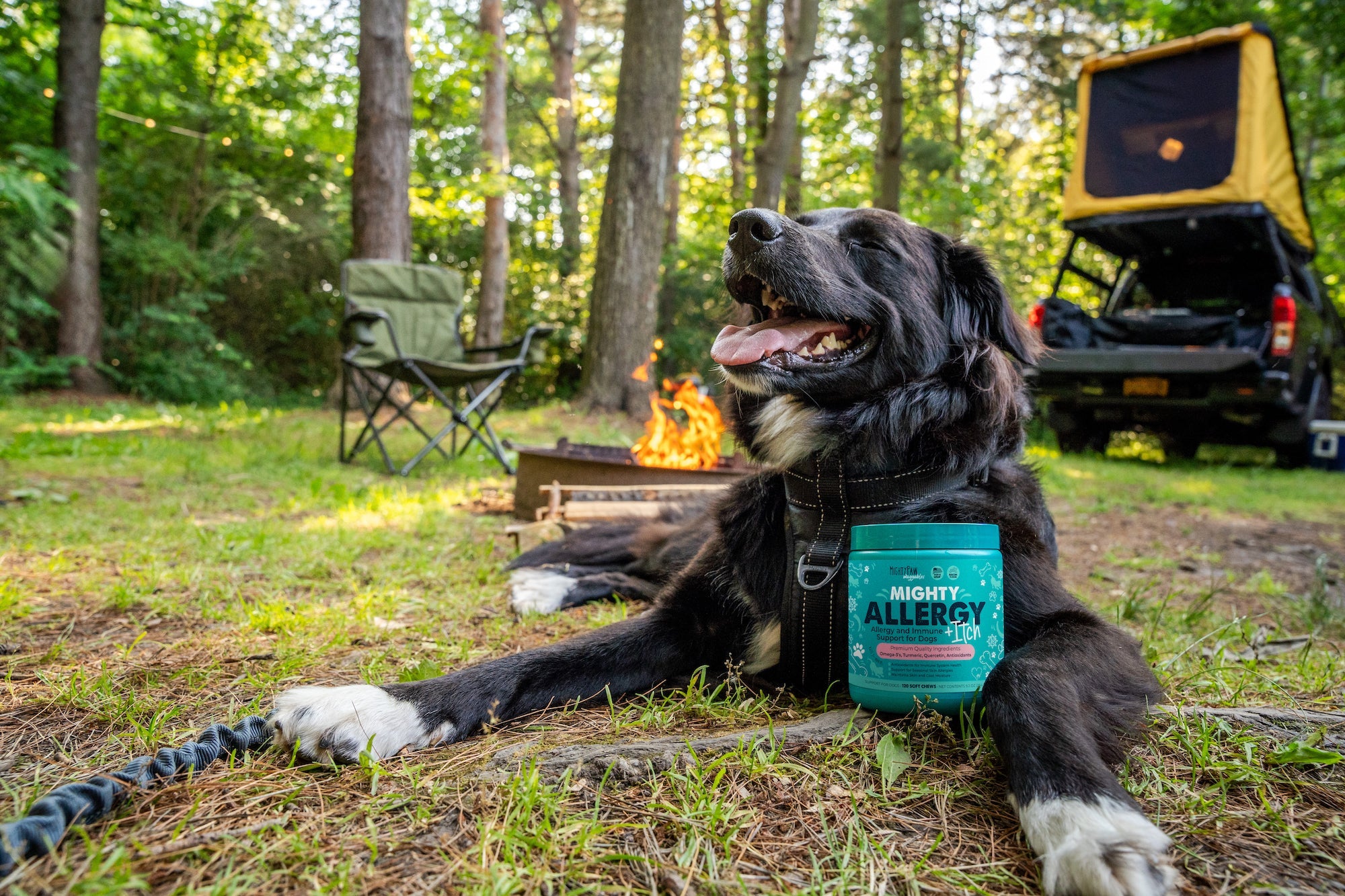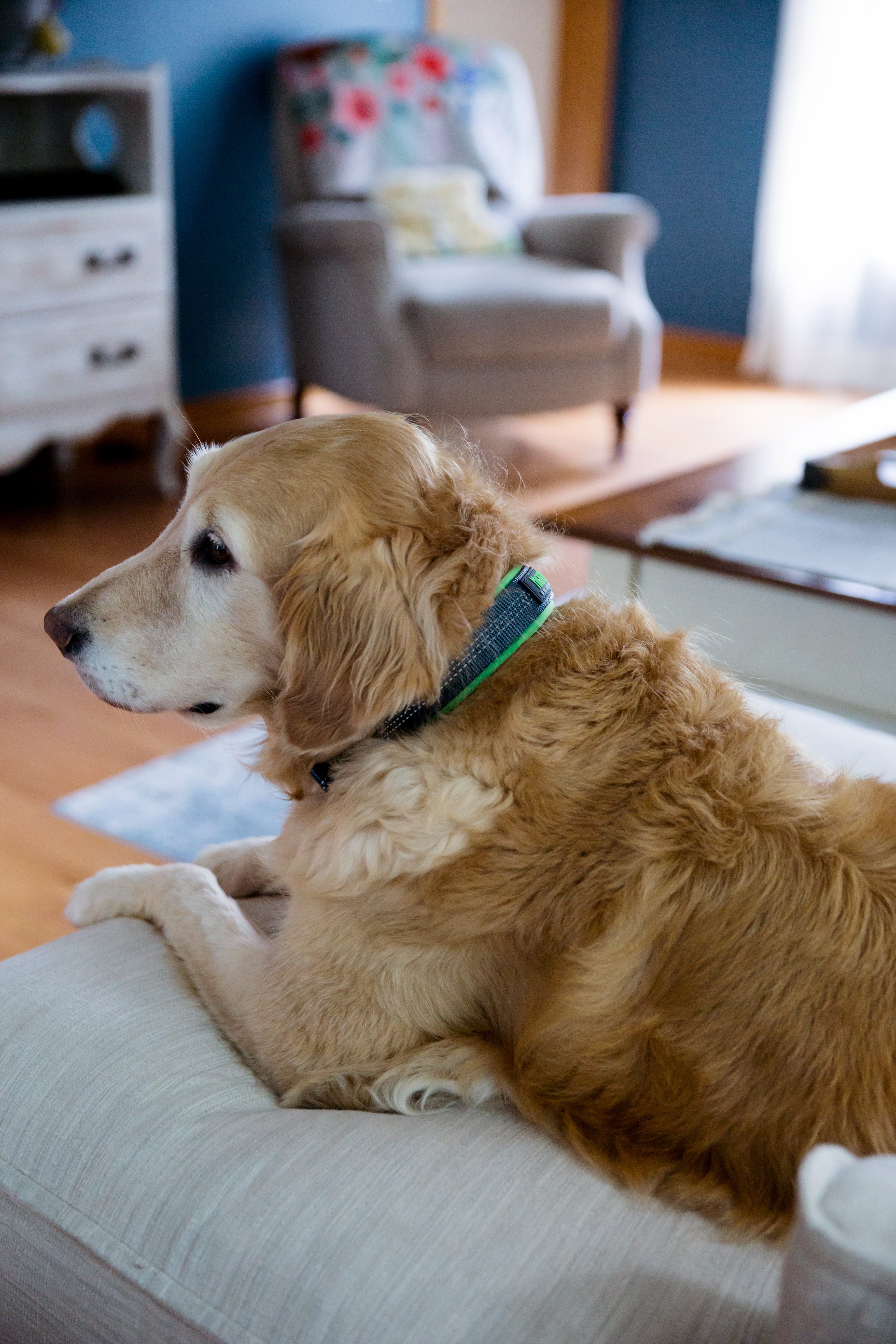Dog walks together can be one of the great joys of life with your dog...

You both get to enjoy being outdoors, get some good physical and mental exercise, and most of all, take in the world together and regenerate your bond with each other.
And yet... one of the most common questions certified positive dog trainers get from dog parents is:
"How can I get my dog to stop pulling on a dog walk?"
If that question sounds frustratingly familiar to you, don't worry, we've got you covered. So let's dive into some answers on how to teach our dogs to walk calmly and start enjoying the walks we imagine with our dogs!
What is a loose leash walk ?
And why are they so beneficial for your dog (and you)?
When your dog can walk nicely by your side with the leash slack and no pulling (!), that's a loose leash walk. Essentially, it's the opposite of walking with a tense, tight leash. Your dog stays in the general vicinity of your feet, with no tension in the leash, and with the ability to check out interesting sniffs without rushing or dragging you everywhere.
Most dogs need training to learn not to pull on leash. Why? Pulling on leash is one of the most natural behavioral issues for curious dogs who want to explore, sniff, and have fun when they're out for a walk!
Learning loose leash walking is one of the essential life skills for dogs, bringing exponential benefits beyond smoother walks:
- Deepening your bond with each other
Positive, collaborative training with your dog is an interactive process that requires you and your dog to work together. Through your loose leash training, you'll be building a stronger bond, trust, and understanding with your pup.
- Promoting good behavior and safety
Dogs who tug and jerk on leash can be more likely to get into dust-ups with other dogs; they are also at greater risk of escaping or getting injured while out for a walk.

What you'll need to get started:
Before you start, a few things that help make it work smoothly and safely...
- Treats - have plenty of treats handy your dog loves. Smaller is quicker to chew and to keep moving. Be prepared to reward often.
- A way of delivering treats - a treat pouch allows you to be hands-free, is easy to reach into quickly so you can reward immediately (better for your dog to connect the reward with the reason you're rewarding).
- A well-fitting, y-type harness - better for your potentially-pulling dog's neck/throat/shoulder health and easier for teaching your dog to walk on a loose leash.
- A leash around 6 feet in length - rope, double-handed, or leather
- An already known marker - a marker is a sound or word (clicker or word like "yes!") that indicates to your dog that he/she has done something that will earn reinforcement aka treats! Your marker is always followed immediately with a treat and praise. Make sure your dog knows your marker before you start.
5 steps to start teaching your dog to walk on a loose leash:
- Begin in a low-distraction environment.
The best place to begin leash manners training is inside your home. Or, if you need more space, try your back yard or other safe space. You want your dog to be able to focus on learning and not be distracted. Once your dog has it largely mastered, you can take it on the road, still introducing distractions gradually.
- Figure out your mechanics before you get going.
Which hand will you use to hold the leash? Which hand will you use to deliver treats? Where is your neutral treating hand position that you'll return to when not treating? You want treats our of sight when you're not treating; otherwise, your dog's attention will be glued to that hand and there will be no focus on anything else. Practice a little in advance. You want to be able to give treats quickly and smoothly so the reinforcement registers.
- Position your dog to set up your pup for success right away.
Position your dog on your preferred side and ask for a sit. Cue your dog with a happy "let's go!" and immediately mark and reward your dog at that first step by your side. Why? This is a good way to immediately capture a success moment when your dog is naturally by your side on that first step and the leash is loose. Deliver the treat directly beside your leg. Keep going and treat as often as you can catch your dog by your side before there's a chance for your pup to get sidetracked.
- Reward your dog well and often.
Continue to walk and click/treat every step or two. This is a super high rate of reinforcement at first because we want to burn in that good reinforcement history right off the bat.
As your dog gets the hang of it, you can begin zig-zagging/changing directions to mix it up, and when you do, increase the rate of rewards to reflect the increased difficulty. Eventually you can vary and spread out your rate of reinforcement, still with plenty of rewards to keep your dog engaged.
Remember to use your dog's most favorite treats -- when you take your walks out in the world, the distractions can be tempting competition for your dog's attention. You want your treats to be more appealing than squirrels, other dogs, or that highly scented tree trunk.
- Validate attentive moments by marking and rewarding.
Anytime your dog offers a "visual check-in" and looks up at you, reward generously. You want to reinforce those moments when she/he offers focus and orients to you. Getting those moments out in the “real world” will make it easier to communicate and stay in sync on your walks!
A lot of loose leash walking is about your dog feeling confidently connected to you, knowing it's not necessary to pull, glancing to check in with you from time to time to know all is well and you're all in this together. (AND knowing good things happen when your dog stays connected with you.)

Troubleshooting: common mistakes to avoid
Dog training and learning new skills can be a complex process, and there are a few common pitfalls you'll want to avoid:
- Too much, too soon.
Keep the distractions low and your training sessions short enough to stay within your dog's comfortable attention span. As your dog begins to master loose leash walking, you can begin to venture beyond your distraction-free zone.
- Focusing on what you DON'T want your dog to do.
Too often dog parents focus on what we don't want our dogs to do instead of the behavior we WANT to see. That leads to a tendency toward punishment which undermines learning and your bond of trust with your dog -- and also proven to be counterproductive. You never want to use aversive equipment or techniques: avoid "popping" the leash, choke collars, reprimands.
Focus on what you DO want to see and use positive reinforcement - generously treat and praise for every small victory. Your dog will learn faster and more happily!
- Being inconsistent.
Dogs thrive on predictability and clear communication, so being inconsistent with your responses to behavior can lead to confusion and slower training progress. If sometimes you are okay with it when your dog pulls, pulling is reinforced (your dog gets wherever he/she wanted to go!) and your dog is confused when you don't allow pulling.
- Not letting your dog be a dog on walks.
Dogs are wired to sniff, and they're mentally and emotionally enriched by it. Give your pup opportunities on your walk to be a dog and sniff often. Your dog will be less inclined to pull when you don't look at walks with a human eye as a fast-paced, rigid exercise but as a chance to get your dog engaged in soul-satisfying strolls with you.
Giving our dogs a chance to slow down can be helpful to walk training. We're encouraging our dogs to explore their interests in a well-mannered way and we're being better partners to them. Stop and smell the flowers together!
- Not using distance for safety and to make learning possible.
Whatever might cause your dog to pull excessively in an emotional situation -- overexcitement or over threshold with fear -- distance is always your friend. Distance can buy you time and space to start walking your dog to a comfort zone, offer plenty of treats, and either get on with your walk in a space where learning can happen again or start fresh another day.
Repeat, treat, and keep it short
Repeat your training over several sessions (keep sessions short and frequent). With time and a positive approach, loose leash walking will become second nature to you and your dog.
Remember to be patient with your dog and with yourself as you both learn a new skill. Loose leash training is an investment that pays off now and in the long run, giving you and your dog the freedom to enjoy walks together!
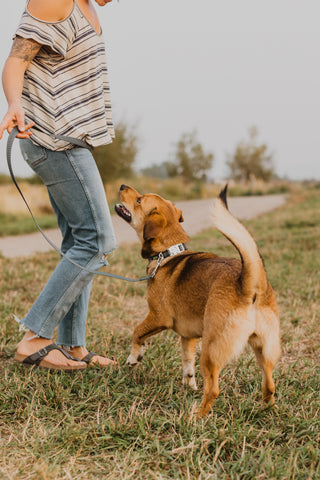
Here's to more relaxing, adventurous walks for you and your dog!
At Mighty Paw, we believe in helping all dogs live their healthiest, happiest, and most connected lives by our sides. That's why we're dedicated to finding ways to help you bring more wellness and joy to your dog and your adventures together large and small.
We're committed to providing high-quality products that are safe, durable, and practical for everything you need to keep your pup healthy, happy, and enjoying every moment with you.



















